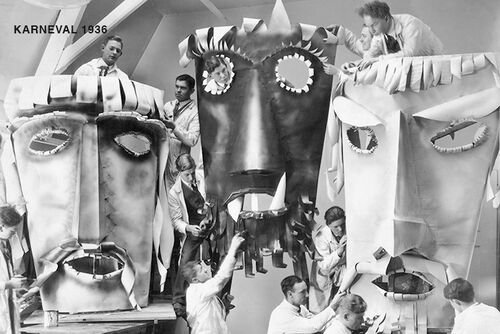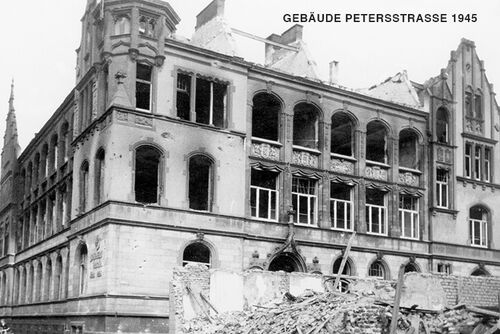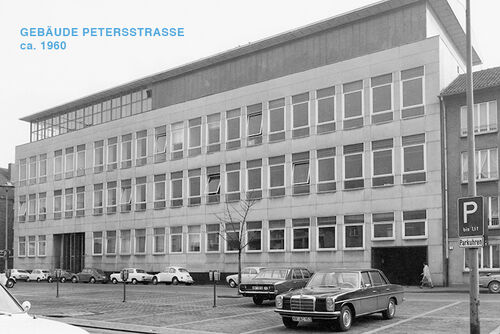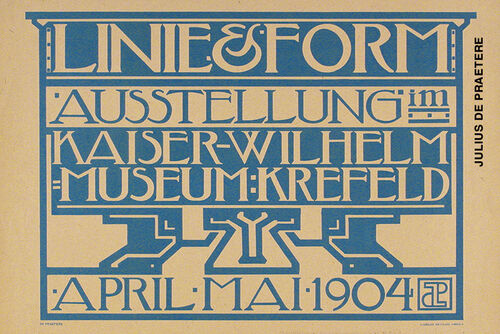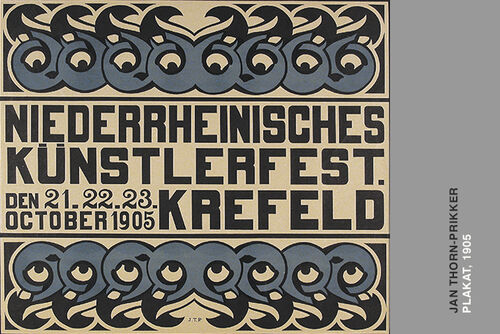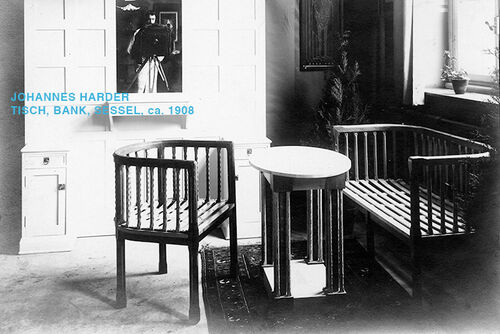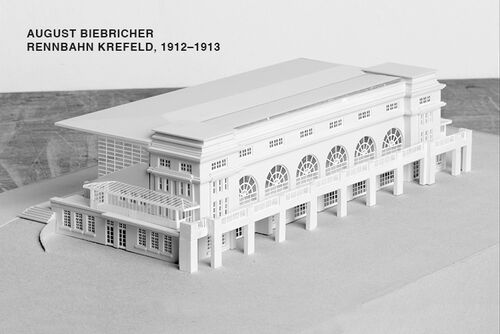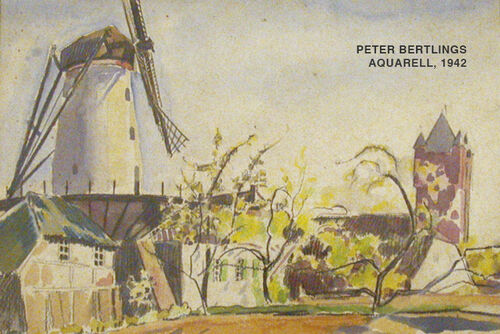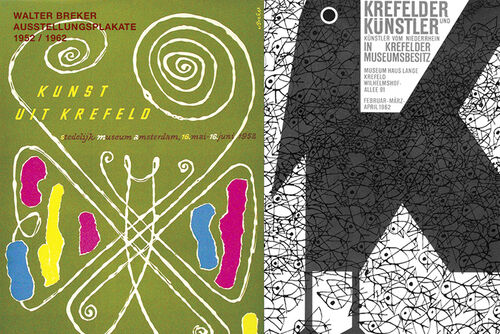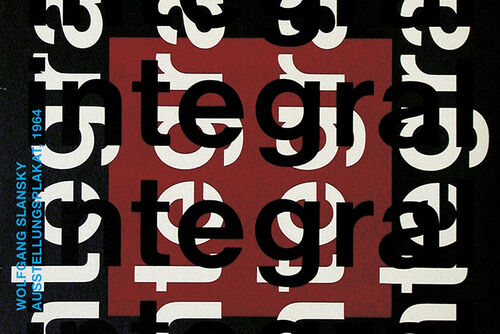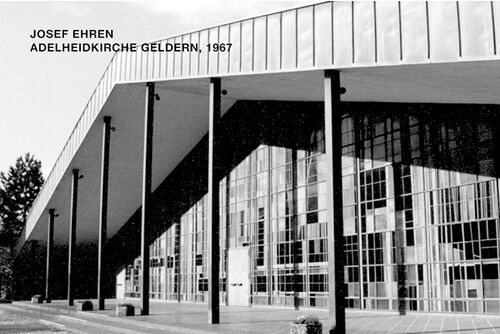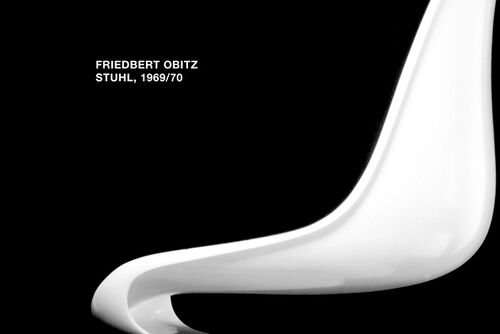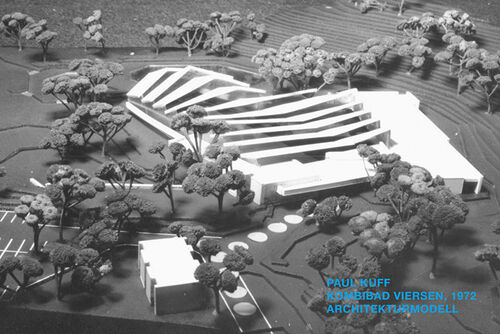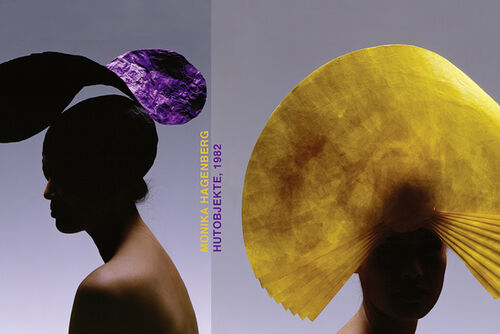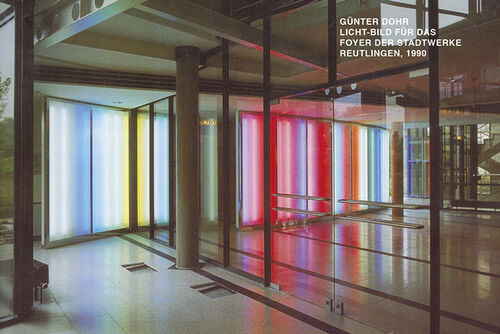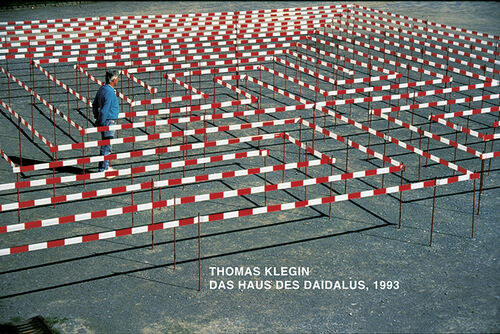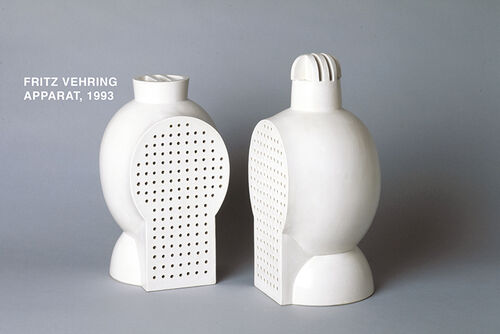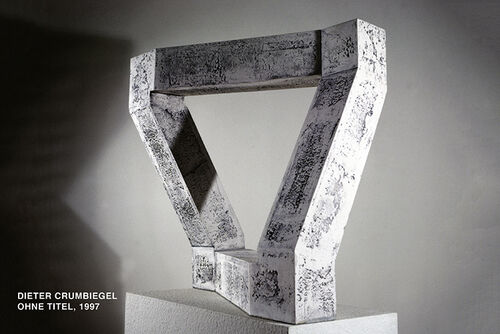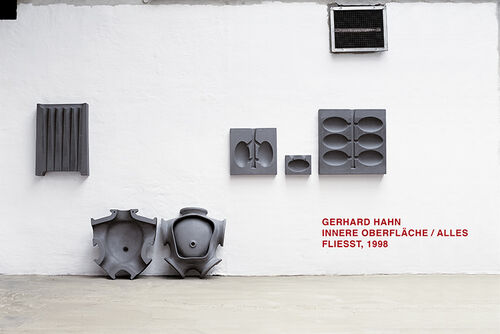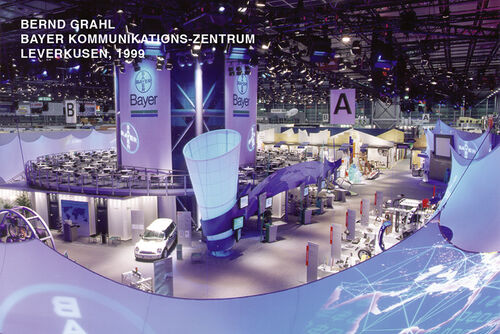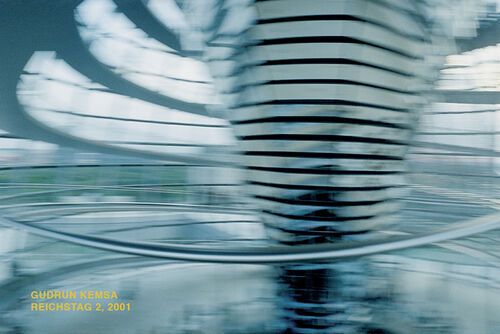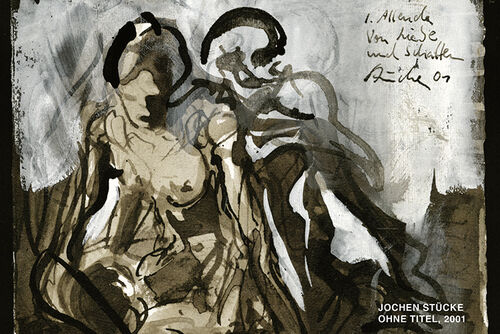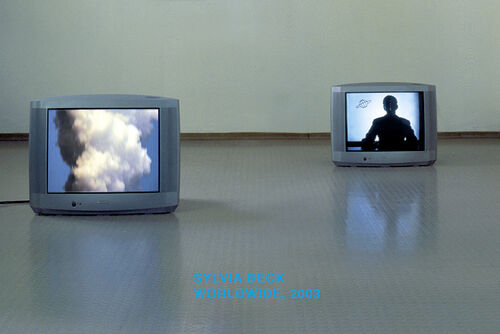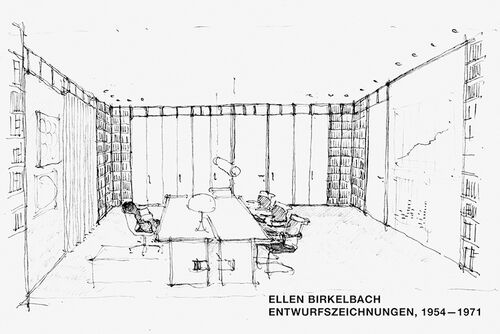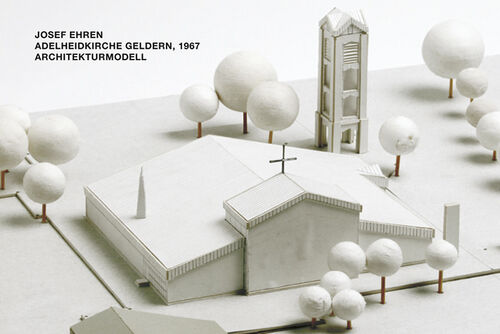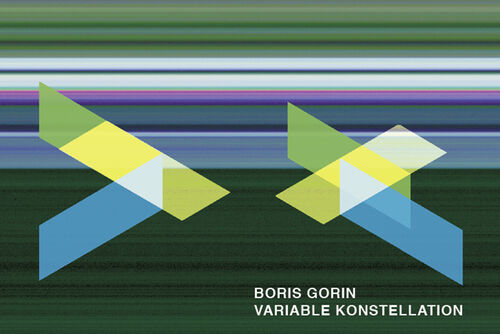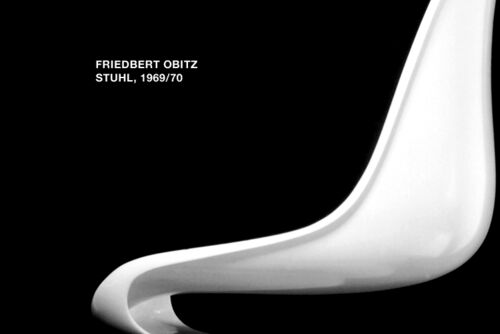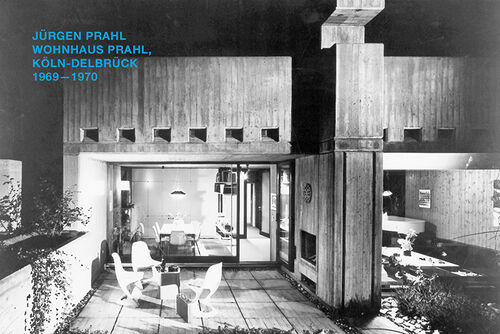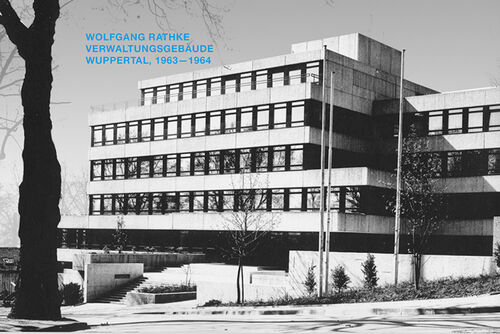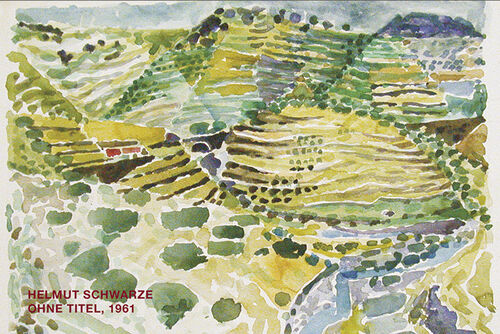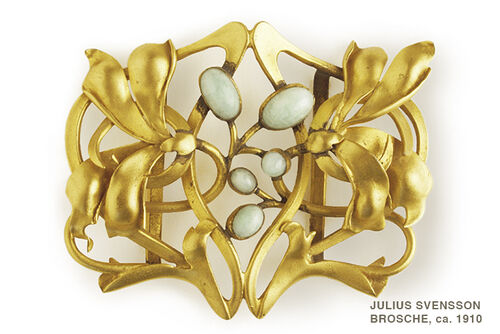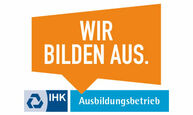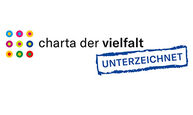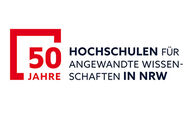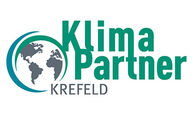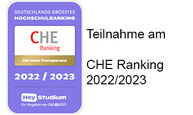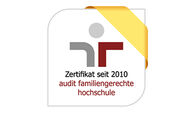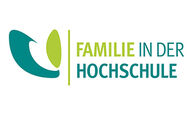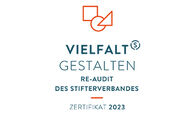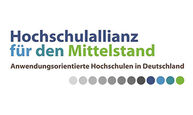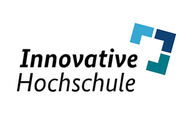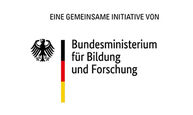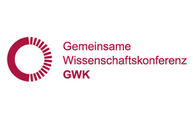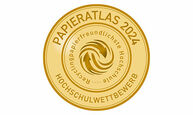1902 The "Gewerbliche Schulen" (commercial schools) of the city of Krefeld set up an arts and crafts class with day and evening classes.
1903 Independent "Craftsmen's and Arts and Crafts School" alongside the industrial training school
April 25: Handover of the new school building at Petersstrasse 123 by Lord Mayor Dr. Hammerschmidt to Carl Wolbrandt, the first director of the new school.
1904 April 30/June 16: Contract between the royal state government and the city of Krefeld on the establishment and maintenance of a school for craftsmen and arts and crafts, which comes into force on October 1 (this date is regarded as the date of foundation). According to this agreement, the state contributes to the school in part financially, while the Ministry of Trade and Commerce is responsible for supervision. First exhibition of the school: "Line and Form" in the Kaiser Wilhelm Museum.
Lecturers 1904-1933
Paul Bausch
Peter Bertlings
August Biebricher
Jens Boysen
Laurens Goossens
Johannes Harder
Raimund Jahn
Richard Kieser
Caspar Lennartz
Gustav Mörl
August Nielsen
Julius de Praetere
Georg Schreiber
Julius Svensson
Jan Thorn-Prikker
Carl Wolbrandt
Ludwig Zaiser
1907 Foundation of the Deutscher Werkbund. Almost all lecturers at the Krefeld School of Crafts and Applied Arts (Biebricher, Boysen, Harder, Jahn, Mörl, Svensson and Wolbrandt) are among the co-founders.
1911 Exhibition of the Deutscher Werkbund: "Gewerbe-, Industrie- und Kunstausstellung zu Crefeld" in the Kaiser Wilhelm Museum, designed by August Biebricher and the rest of the teaching staff. Participation of all departments of the school.
1914 Start of the First World War, many teachers are drafted. Teaching is maintained by Peter Bertlings, Ludwig Zaiser and by substitutes and temporary staff.
1918 Summer semester: 39 full-day students (women 12), 33 half-day students (women 16), 301 evening students (women 73).
1922 First foreign students enroll, from Russia, Switzerland, the Netherlands, and Belgium.
1923 Exhibition of teacher and student work at the Kaiser Wilhelm Museum.
1924 Director Paul Wolbrandt dies. Prof. Johannes Harder takes over as deputy director of the school.
1926 Prof. Caspar Lennartz, architect, previously director of the Kiel School of Applied Arts, is appointed new director.
1933 Nationwide discussion about the tasks of the schools of arts and crafts: No longer designers, but capable tradesmen are to be trained. The school's name is changed by ministerial decree to "School of Crafts for the Building and Arts and Crafts Professions".
Lecturers 1933-1945
Paul Bausch
Peter Bertlings
Walter Breker
Laurens Goossens
Caspar Lennartz
Karl Stickelbrocks
Hans Stierhoff
Ludwig Zaiser
1934 The architecture, sculpture and ceramics departments are closed. Consequent strangulation of the school. Only trade departments are allowed to remain. Five of seven "artist-teachers" are dismissed.
1938 Name changed by ministerial decree to: "Meisterschule des Deutschen Handwerks, staatlich unterstützte städtische Fachschule für Tischlerei, Malen, Grafik, Flächenkunst und Metall". Reduction of teacher positions to five.
1939 The first teachers and students are drafted. Classes are maintained by substitutes and temporary help.
1943 June 22/23: Severe damage to the building at Petersstraße 123 by bombs. Classes continue in the manor house of Burg Linn. Prof. Lennartz resigns as director. Renaming of the school to: "School for master craftspeople in the skilled trades".
1944 August 1: no more classes possible.
1945 January 11: extensive destruction of the building at Petersstrasse 123.
1948 Prof. Stephan Hirzel directs the school for a few months.
Lecturers1949-1971
Hans-Joachim Albrecht
Vilibald Barl
Paul Bausch
Heinz Behrendt
Peter Bertlings
Ellen Birkelbach
Walter Breker
Norbert von Chamier Glisczinski
Thomas Dawo
Paul Dresler
Josef Ehren
Joseph Fassbender
Klaus Fleischmann
Gustav Fünders
Julio Girona
Heinrich Gillis Görtz
Laurens Goossens
Hubert Griemert
Roswitha Hirner
Stephan Hirzel
Wilhelm Holzhausen
Gerhard Kadow
Günther C. Kirchberger
Paul Kuff
Karl-Heinz Modigell
Friedbert Obitz
Detlef Orlopp
Jürgen Pahl
Wolfgang Rathke
Helmut Schwarze
Wolfgang Slansky
Heinrich Stappmann
Robert Steiger
Karl Stickelbrocks
Ernst-August Sundermann
Hein Wimmer
Fritz. G. Winter
Ludwig Zaiser
Waltraut Zaiser
1949 Prof. Fritz G. Winter, architect, takes over management of the school; renamed "Werkkunstschule". Prof. Winter becomes chairman of the "Arbeitsgemeinschaft der Werkkunstschulen in der Bundesrepublik Deutschland".
1954 Exhibition "50 years of WKS Krefeld" in the Kaiser Wilhelm Museum.
1965 Exhibition "Integral", building Petersstraße 123.
1970 "Krefeld Model" - First attempt at democratic self-administration after the student unrest since 1968. Conference in the Werkkunstschule building under the motto: "Design: theory, teaching education practice".
Lecturers1971-2004
Hans-Joachim Albrecht
Vilibald Barl
Silvia Beck
Rainer Bergmann
Hanne Dore Bickerich
Monika Brandmeier
Norbert von Chamier Glisczinski
Dieter Crumbiegel
Thomas Dawo
Günter Dohr
Klaus Fleischmann
Heinrich Gillis Görtz
Boris Gorin
Bernd Grahl
Monika Hagenberg
Gerhard Hahn
Helmut Hahn
Roswitha Hirner
Wolf Karnagel
Gudrun Kemsa
Günther C. Kirchberger
Thomas Klegin
Volker Lehnert
Karl-Heinz Modigell
Friedbert Obitz
Detlef Orlopp
Wolfgang Rathke
Angelika Rösner
Rolf Sachsse
Ursula Scherer
Wolfgang Slansky
Heinrich Stappmann
Robert Steiger
Jochen Stücke
Ernst-August Sundermann
Fritz Vehring
Manfred Vogel
Georg Wagner
Fritz G. Winter
Peter Wörfel
Waltraut Zaiser
1971 Integration of the WKS into one of eight faculties as: "Faculty of Design of the University of Applied Sciences Niederrhein" into the newly founded University of Applied Sciences. The sponsorship is transferred entirely to the state of North Rhine-Westphalia, with the Ministry of Science and Research being responsible. The fields of architecture and interior design (45% of the school!) are transferred to the university of applied sciences in Düsseldorf ("concentrated away"). The number of students shrinks to 217, leaving the areas of graphic design, industrial design, ceramic/porcelain design and object design.
1974 Issue of examination and study regulations, in which the studies are qualitatively and quantitatively regulated.
1976 Establishment of the area of specialisation Textile Design.
1977 Exhibition of student works in the Museum Haus Lange in Krefeld "Design in Krefeld '77".
1979 Relocation of the Industrial Design department to Essen; celebration of the 75th anniversary with an open day at Petersstraße 123.
1989 Move of the Ceramic/Porcelain and Textile Design departments to the university building at Frankenring 20, formerly the Textile Engineering School (in Mönchengladbach since 1971).
1982 New examination and study regulations.
1984 Acquisition of the first computer.
1994 90th anniversary of the Faculty of Design - Open Day, exhibition "Castles in the Air and Submarines".
1996 Cooperation with foreign universities in Dundee (Scotland), Rovaniemi (Finland) and Gent (Belgium).
1997 Internet presence of the faculty. The field of study "Graphic Design" is abolished, there is now the degree programme "Communication Design". New examination and study regulations adapted to the so-called key data regulation.
2001 Struggle over the Degree programme in Communication Design. This is finally integrated - together with Product Design - into an all-encompassing Degree programme in Design. The university of applied sciences is renamed the Hochschule Niederrhein.
2004 "Relay - Design from Krefeld" - exhibition in the Kaiser-Wilhelm-Museum on the occasion of the 100th anniversary of the Faculty of Design.
Lecturersas of 2006
Silvia Beck
Nicolas Beucker
Boris Gorin
Bernd Grahl
Nora Gummert-Hauser
Gerhard Hahn
Richard Jung
Gudrun Kemsa
Thomas Klegin
Thorsten Kraus
Kerstin Plüm
Sigrun Prahl
Angelika Rösner
Erik Schmid
Susanne Specht
Jochen Stücke
Georg Wagner
2006 The location at Peterstraße is given up. All fields of study now find space in the listed building of Bernhard Pfau at Frankenring 20.
2007 The Bologna Process changes the university landscape dramatically and also in Krefeld the first 6-semester Bachelor's programme "BA Design" and the first 4-semester Master's programme "MA in Design Projects" are accredited. The diploma program is phased out. Discussions about the new programme of study are ongoing and criticism of it continues unabated.
2009 In the course of re-accreditation, a change is made: The Bachelor's degree programme is now offered in 7 semesters and the Master's degree programme in 3 semesters. The practical phase in the Bachelor's degree is extended to a one-semester practical or semester abroad.
2013 The exhibition "Vision and Perspective - Krefeld Building Culture by Bernhard Pfau" takes place at Frankenring from June 15-August 9. Extensive and interesting, the whole building is included in the exhibition by the team around Nicolas Beucker and Christiane Lange.
In 2014, extensive renovation work will take place in the listed building. The glass façade facing the garden will be completely restored according to an energetic renovation concept. The construction measures last, building defects are handled with delay and hinder the work on the Frankenring. The building is scaffolded and the garden cannot be used until the degree of the measures.
2015 The VIERTELPULS festival takes place in the fall. It was initiated and conceived by the competence centre Social Design and designkrefeld students, in cooperation with UNS (Urbane Nachbarschaft Samtweberei), the city of Krefeld and the state initiative StadtBauKultur NRW.
2016 A restructuring of the degree programmes takes place and accreditation is applied for two separate degree programmes: the Degree programme "BA Communication Design" and "BA Product and Object Design". A total of around 600 students study at the Faculty of Design.


